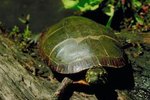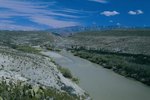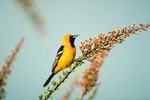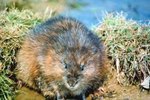
The Eastern mud turtle (Kinosternon subrubrum) is a small turtle species that is especially common in southeastern regions of the United States, but that also is quite often seen throughout the northeast, as well. Eastern mud turtles are omnivorous creatures that spend time both in water and over land.
Geography of the Eastern Mud Turtle
Although Eastern mud turtles are prevalent in the American southeast, particularly in Alabama, they also are found in many other areas of the country, including New York, southern sections of Indiana and Illinois, Missouri, New Jersey, Florida and Texas. In the southeast, these turtles are widespread in low-lying plains along coastal regions.
Eastern Mud Turtle Natural Habitat
These semi-aquatic reptiles exist in both brackish and freshwater conditions, with some common settings including ponds, sloughs, rivers, muskrat-built lodges, cypress swamps, salt marshes, fields, ditches alongside roads, oxbows, streams, bogs, damp meadows, creeks, lakes and wetlands. Eastern mud turtles do well in bodies of water that move slowly and that also have high levels of vegetation. They also prefer organic bottoms with smooth surfaces. Shallow, quiet and still waters are also big preferences for the Eastern mud turtle species. These little guys are not big on basking compared with some other types of turtles.
Drying Up of Wetlands
When Eastern mud turtles reside in wetland environments that periodically dry up, especially during the summer months, they cope with the temporary change by digging underground burrows within the mud and entering into a restful period of inactivity and dormancy called "aestivation," not unlike hibernation. Some Eastern mud turtles also handle drying up by simply traveling to a totally different location. Not only do these turtles occasionally aestivate in the summer, they also go into hibernation each winter -- usually between the months of September and April. Mating takes place during the spring months.
Swimming Skills of the Eastern Mud Turtle
Although Eastern mud turtles are indeed semi-aquatic animals, they generally aren't very proficient swimmers, according to the Towson University Department of Biological Sciences. Because of their lack of swimming skills, Eastern mud turtles frequently crawl while in the water.
References
- Virginia Department of Game and Inland Fisheries: Eastern Mud Turtle
- New York State Department of Environmental Conservation: Eastern Mud Turtle Fact Sheet
- Maryland Department of Natural Resources: Field Guide to Maryland's Turtles
- Towson University Biological Sciences: Eastern Mud Turtle
- Savannah River Ecology Laboratory: Eastern Mud Turtle
- William & Mary University VIMS: Eastern Mud Turtle
- Reptile Channel: Eastern Mud Turtle Reptiles
Photo Credits
-
Photos.com/Photos.com/Getty Images




